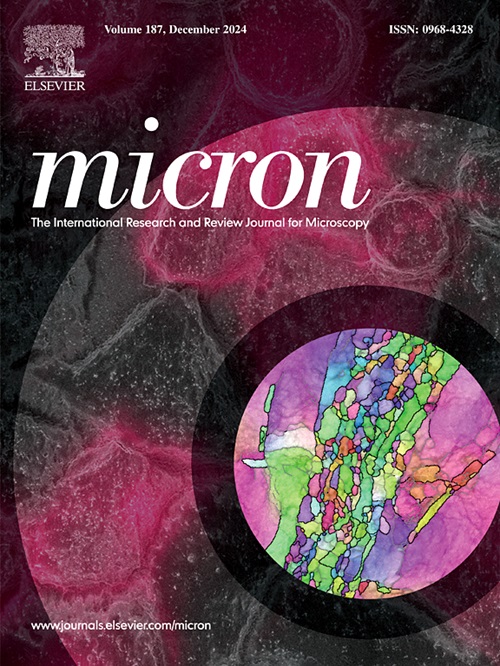探讨低温fesem在水生微甲壳类动物分类研究中的潜力:以深海藻(Bathynellacea, Malacostraca)为例
IF 2.2
3区 工程技术
Q1 MICROSCOPY
引用次数: 0
摘要
对微甲壳类动物的分类研究是一项耗时且具有挑战性的工作,它减缓了新发现的速度,反过来又减缓了对全球水生生物多样性的认识。为了促进对这些小生物的研究,需要不断探索新的应用。在这里,我们评估了环境扫描电子显微镜(ESEM)技术,特别是低温场发射扫描电子显微镜(cro - fesem)在微甲壳类动物分类描述中的潜在应用。以地下水中的一种拟水藻(Parabathynellidae, Bathynellacea)为例,与传统的制备方法相比,低温fesem的样品制备相对快速和简单。使用该技术获得的高清图像补充了使用光学显微镜(1000倍)获得的图纸和数字照片。此外,获得更高放大图像(高达10万倍)的能力允许对超微结构进行详细观察,揭示了Parabathynellidae家族中以前未报道的结构的存在,包括雄性胸足动物VIII齿状叶牙齿上的小齿。不幸的是,冷冻fesem样品太脆弱,无法在成像后恢复,因此目前不能取代现有的分类方法,这些方法允许保存样品,特别是全型和类型系列标本,以供未来研究。在有许多标本可供研究的情况下,冷冻fesem作为一种很好的方法来补充传统方法,以提供更详细的描述和了解物种的外部形态。本文章由计算机程序翻译,如有差异,请以英文原文为准。
Exploring the potential of cryo-FESEM for the taxonomic study of aquatic microcrustaceans: Bathynellacea (Crustacea, Malacostraca) as an example
The taxonomic study of microcrustaceans is a time consuming and challenging endeavor, which has slowed the rate of new discoveries, and in turn knowledge on, global aquatic biodiversity. To facilitate the study of these small organisms, new applications continually need to be explored. Here, we assess the potential use of environmental scanning electron microscopy (ESEM) techniques, specifically cryo-field emission SEM (cryo-FESEM), for taxonomic descriptions of microcrustaceans. Using a species of Parabathynellidae (Crustacea, Bathynellacea) from groundwater as a case study, we found sample preparation for cryo-FESEM to be relatively rapid and minimal compared with traditional preparation methods. The high-definition images obtained using this technique complement the drawings and digital photographs obtained using light microscopy (at 1000x). Moreover, the ability to obtain higher magnification images (up to 100,000x) allowed for a detailed observation of ultrastructures, revealing the presence of previously unreported structures in the family Parabathynellidae, including small denticles on the teeth of the dentate lobe of the male thoracopod VIII. Unfortunately, cryo-FESEM samples are too fragile to recover post-imaging and therefore cannot, at present, replace current taxonomic methods that allow for the preservation of samples, specifically holotypes and type series specimens, for future study. For cases in which many specimens are available for study, cryo-FESEM serves as a good method to supplement traditional methods to provide a more detailed description and understanding of the external morphology of a species.
求助全文
通过发布文献求助,成功后即可免费获取论文全文。
去求助
来源期刊

Micron
工程技术-显微镜技术
CiteScore
4.30
自引率
4.20%
发文量
100
审稿时长
31 days
期刊介绍:
Micron is an interdisciplinary forum for all work that involves new applications of microscopy or where advanced microscopy plays a central role. The journal will publish on the design, methods, application, practice or theory of microscopy and microanalysis, including reports on optical, electron-beam, X-ray microtomography, and scanning-probe systems. It also aims at the regular publication of review papers, short communications, as well as thematic issues on contemporary developments in microscopy and microanalysis. The journal embraces original research in which microscopy has contributed significantly to knowledge in biology, life science, nanoscience and nanotechnology, materials science and engineering.
 求助内容:
求助内容: 应助结果提醒方式:
应助结果提醒方式:


